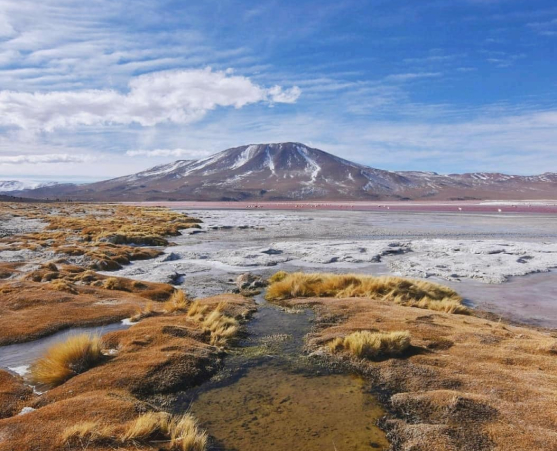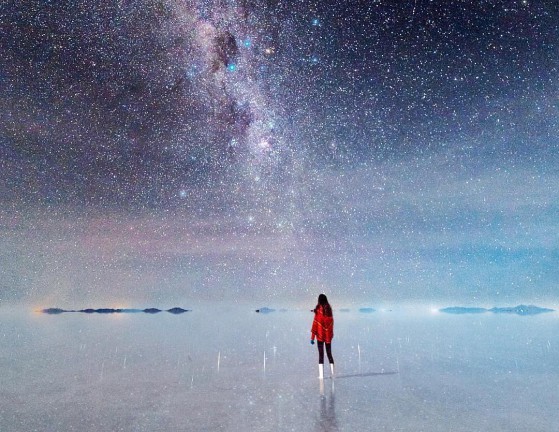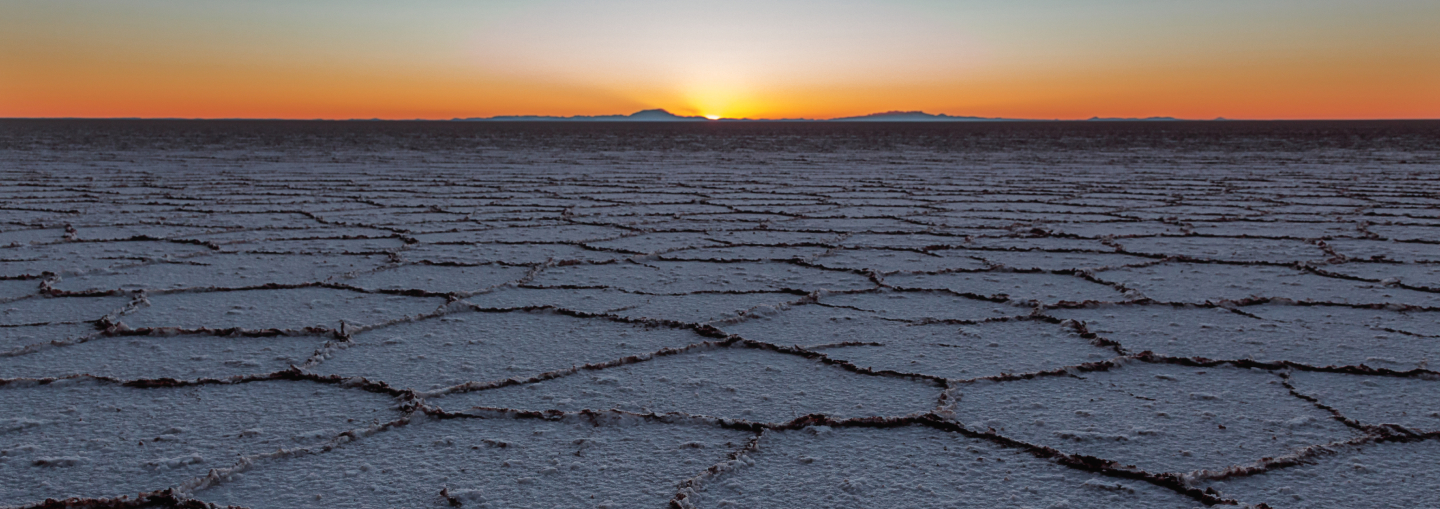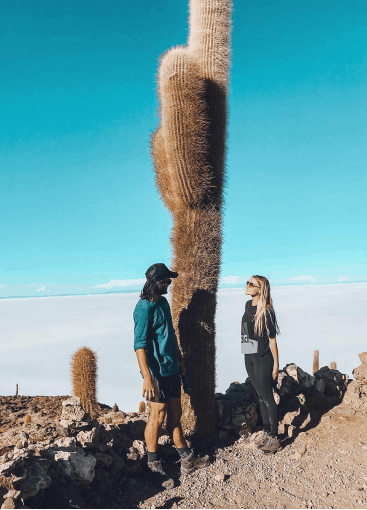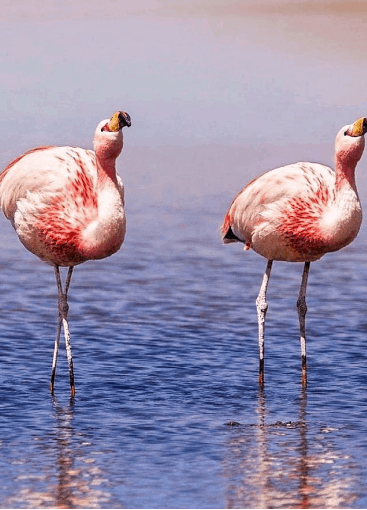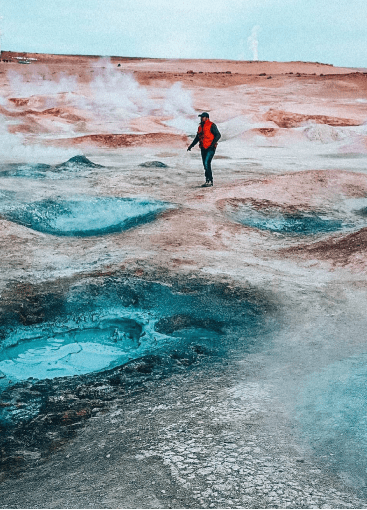The Bolivian salt flats are the largest in the world and are also one of South America’s main tourist attractions. This huge terrain of salt that shimmers in the light covers a span of 10,582 kilometres of the Altiplano which can be seen from as far away as space! Strata of salt are compressed and sandwiched between deposits of sedimentary rock that reach as far a 10cm deep in certain parts of the flat. There is approximately 10 billion tons of salt in the flat. While the salt is what attracts tourists from all around the world, the real value of the land lies beneath. Approximately 70% of the world’s supply of lithium can be found beneath the flats. This thin metal is used to power a wide range of technology. An entire industry has been devoted to the extraction of the metal.
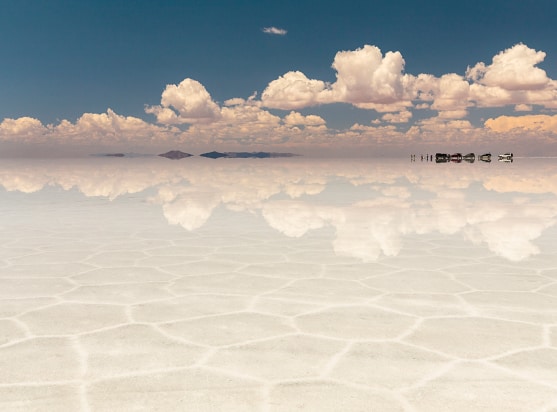
The Worlds Largest Salt Flat

Worlds Largest Mirror
On a calm day, a thin film of water that sits atop of the salt flat transforms it into ‘The World’s Largest Mirror’ which reflects the sky. This stunning reflection is most often found from December to April (the rainy season). It is often said that when this natural wonder occurs that it is extremely difficult to distinguish the exact point where the sky and land meet.
Apart from the islands ‘Isla Incahuasi’ and ‘Isla del Pescado’, which are filled with different types of cacti, the landscape is completely flat. Both the flat landscape and the mirror effect lend themselves to the creation of crazy perspective photos. With the incredible mirror effect and perspective photos alongside the natural beauty of the landscape, it is no wonder that this is the paradise of many photographers from around the world.
